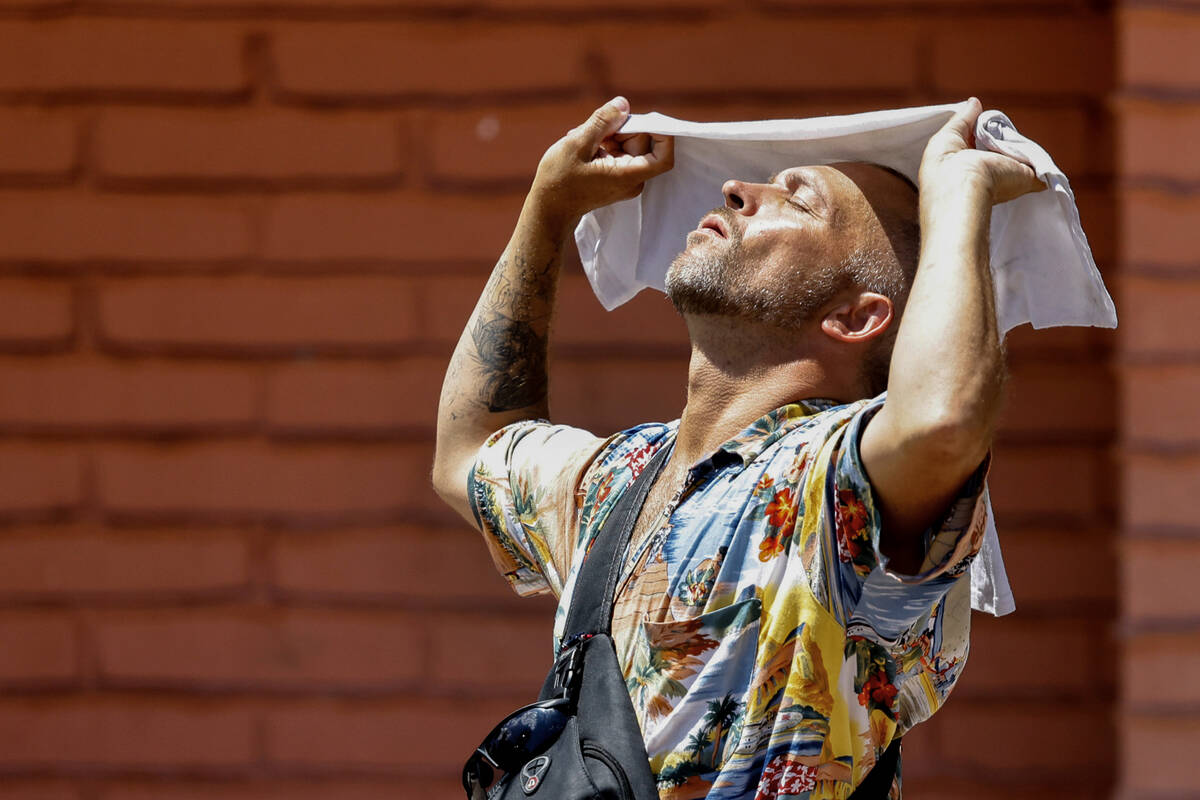’Hot and getting hotter’: Las Vegas heat warning gets a longer life
An excessive heat warning for the Las Vegas region has been extended for two full days by the National Weather Service.
Originally forecast to run from 11 a.m. Wednesday to 11 p.m. Monday, the new expiration time is 11 p.m. Wednesday.
Happy 4th of July!!!
🎆🇺🇸
🥵 It'll be a scorcher today with Excessive Heat Warnings in place for much of the region.
🥵 Hot & dry conditions + fireworks make a bad combination. Leave it to the professionals.
Have a safe Independence Day!#VegasWx #NvWx #CaWx #AzWx pic.twitter.com/D5rfWrBSch— NWS Las Vegas (@NWSVegas) July 4, 2024
High temperatures in Las Vegas, Pahrump and Barstow, California, will range from 110 to 118. Overnight lows will be around 90.
The current forecast calls for a high of 118 on Sunday, 117 on Monday and 118 on Tuesday, said meteorologist Chris Outler.
The record high in Las Vegas is 117, and it has occurred five times.
The airport last reached 117 on July 10, 2021. It also reached 117 on June 20, 2017; June 30, 2013; July 19, 2005; and July 24, 1942.
“The message has not changed too much,” Outler said. “It’s hot and getting hotter.”
The high temperature at Harry Reid International Airport was 113 as of 3:30 p.m. Thursday after a Wednesday high of 113. The North Las Vegas Airport showed a reading of 114 shortly before 3 p.m.
There have been nine heat-related deaths in Clark County this year with all of them happening in the past five weeks.
Heat related illnesses increase significantly during extreme heat events. Here are the signs of severe heat issues and what to do in each situation.
Anyone overcome by heat should be moved to a cool and shaded location. Heat stroke is an emergency. Call 911.
More safety advice
— Drink plenty of fluids
— Stay in an air-conditioned room and stay out of the sun.
— Check up on relatives and neighbors.
— Do not leave young children and pets in unattended vehicles. Car interiors will reach lethal temperatures in a matter of minutes.
— Take extra precautions when outside such as wear lightweight and loose fitting clothing.
— Try to limit strenuous activities to early morning or evening.
— To reduce risk during outdoor work, the Occupational Safety and Health Administration recommends scheduling frequent rest breaks in shaded or air conditioned environments.
Contact Marvin Clemons at mclemons@reviewjournal.com.
























